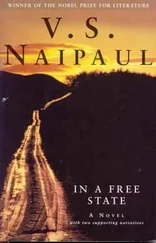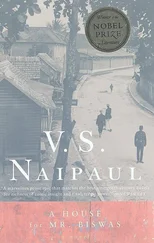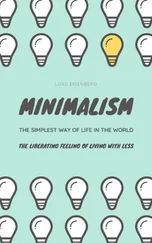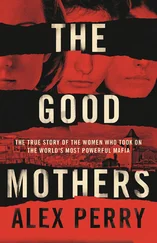The lawyer was famous for his first name, which was Evander. And all I could think of, at this artificial moment, was to ask how he had been given it.
He said, “My father worshipped education. It was his way of giving me ambition. He was not an educated man. But he was born in 1867 or 1870. That’s a long time ago for us. If you look it up, you’ll find the name in Homer. Book four or book five.”
It was surprising, that this famous man hadn’t gone into his unusual name, didn’t know that the name came from Latin and Virgil, and had simply tried to bluff me. He was a self-made man. He hadn’t had anything like a formal education; all his energies had gone into his profession and making his way. But this flaw in his character, so casually revealed, was worrying. While I was getting used to that new idea of him, he was taking the conversation, by ways I cannot reconstruct, to something else.
The moment came when he leaned back in his Windsor chair, thrust his big white-sleeved forearm across the table, in a gesture of strength, and said, with a smile, and as a kind of pledge, “The race! The race, man!”
The black race, the African race, the coloured races: I suppose that was what the lawyer meant, and that was why I had been brought to his chambers.
I looked at his son. His face registered nothing, as though he hadn’t heard what his father had said and hadn’t noticed the gesture he had made.
I didn’t believe that, didn’t believe that blank face. At the lower end of St. Vincent Street I had years before smelt paper and ink and warm printing presses, and certain fantasies had come to me. In this back room of the chambers, with the jalousie-strained light, were other fantasies, subterranean emotions that had to be hidden from the light of St. Vincent Street, from the colonial reality of that street.
This was in the late 1940s. Few black people at that time could see a way ahead. How strange, then, to find an old man, a man born in the last century, to whom the way ahead was clear, something he could even toast, with an instinctive gesture across the desk that twenty years later might have been seen as a black-power salute. What was stranger was that the public idea of Evander, my friend’s father, was not like this at all. In the gossip Evander was the self-made black man who wanted only to be white, wanted to have nothing to do with black people, and in everything he did was fighting only for himself.
This other dream was like a family secret, which father and son were now admitting me to. I was moved, but at the same time embarrassed. I understood their feelings, shared them to some extent, but I wished, even with that understanding, to belong to myself. I couldn’t support the idea of being part of a group. I would have felt tied down by it, and I thought Evander’s idea of a great racial movement forward too sentimental.
THE CIVIL service didn’t employ anyone under seventeen, and in the next year, on my seventeenth birthday, I went to work in the Registrar-General’s Department, and got to know St. Vincent Street in quite another way.
The department was on the ground floor of the Red House. The Red House was the principal building of the administration. It was one of the biggest buildings in the island and we all thought it was beautiful. I am not sure whether its dull red colour came from paint or from something that had been mixed into the plaster. It was one of the buildings that made Port of Spain Port of Spain. You saw it from the harbour, from the hills, and from across the Savannah.
It was in the Italian style, we were told. It was on two floors, with open galleries on both floors, and with a dome. It was as wide as a block, and there was a walkway, below that red dome, between St. Vincent Street and Woodford Square, on the other side. That walkway gave a special big-town feel. You went up stone steps, and then you walked in an echoing openness past a fountain and then down other steps to the other side. The fountain didn’t work — one of the interruptions we associated with the war — but the marble, though iron-stained and tide-marked, was still beautiful, and the idea of the fountain was somehow still there.
On either side of the empty fountain big, free-standing, wooden notice-boards, head-high, were set in front of the open doors of government departments. These notice-boards also served as screens, shielding clerks and typists and other civil servants from the gaze of the people passing to and fro. At the back of the notice-boards were bicycle-racks, where the civil servants chained up their bicycles. Notice-boards and bicycle-racks took away something of the openness of the walkway below the high pierced dome. So already there was a feeling of a fine building not being seen in all its beauty, and beginning to be misused.
The notice-boards didn’t carry government instructions. The pinned-up posters were about health care and the importance of vaccinations, things like that. Many of them came from London, and didn’t always completely apply to local conditions; but we were used to that. These notice-boards and posters were the work of the Information Office, a department that had been established during the war — in a timber building set down on the lawn of the Red House — to give out pictures and booklets about the war and about life in England. These posters and notices about health and blood-tests and X-rays and clean water were a peacetime continuation of that work. You saw these posters only in the Red House; you didn’t see them anywhere else. I never thought they meant anything; but they introduced me to the idea of government as a benevolent agency, concerned about people.
This idea of government shouldn’t have been new to me, after all that I had learned at school. But in every practical and concrete way it was new. It must have been that I carried in my blood and brain very old Indian ideas about the indifference or the arbitrariness of rulers and governments. They were simply there; you looked to them for nothing. Or it might have been that — without any words being spoken — I had grown up thinking of cruelty as something always in the background. There was an ancient, or not-so-ancient, cruelty in the language of the streets: casual threats, man to man and parents to children, of punishments and degradation that took you back to plantation times. There was the cruelty of extended-family life; the cruelty of the elementary school, the bad beatings by teachers, the bloody end-of-term fights between boys; the cruelty of the Indian countryside and the African town. The simplest things around us held memories of cruelty.
The Registrar-General’s Department was to the right of the fountain, if you entered the Red House from St. Vincent Street. If you walked right through you ended in Woodford Square. This was the most beautiful square in Port of Spain, and it was named after the very young English governor who in the second decade of the nineteenth century brought order and law to the colony after the anarchy that followed the British conquest. The Spaniards lost Port of Spain almost as soon as they had laid it out. Woodford Square, at that time, would have been nothing, empty ground. It had been embellished by the British, and we thought it of a piece with the splendour of the Red House. It had a bandstand, a fountain like the one in the Red House, benches, decorative iron rails, paved paths; and it was full now of old, shady trees.
Always beautiful, always a glorious thing of the town, yet even when I had first seen it, that Sunday before the war when my father took me on a walk through the town centre, this square was one of the places in Port of Spain where homeless people lived. Most of these people were Indians. Many of them would have been indentured immigrants from India who had served out their indentures on the sugar estates and then for one reason or another — perhaps they had become drinkers; perhaps they hadn’t been given their promised passage back to India; perhaps they had quarrelled with their families — had found themselves with nowhere to live. These people were without money, job, without anything like a family, without the English language; without any kind of representation. They were utterly destitute. They were people who had been, as in a fairy story, lifted up from the peasantry of India and set down thousands of miles away — weeks and weeks of sailing — in Trinidad. In the colonial setting of Trinidad, where rights were limited, you could have done anything with these people; and they were tormented by the people of the town.
Читать дальше












